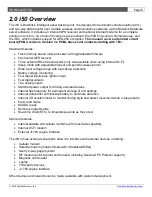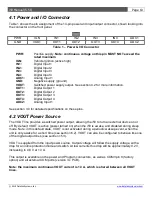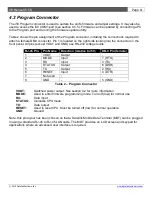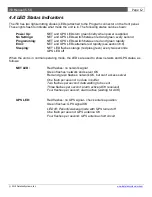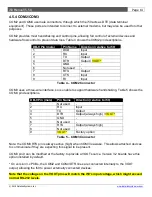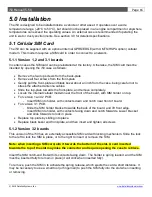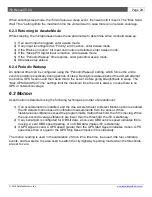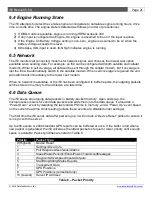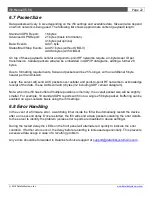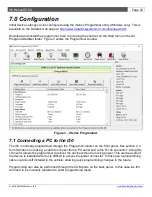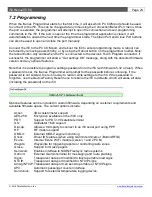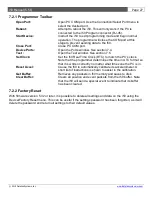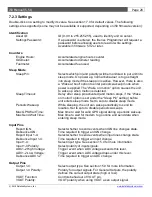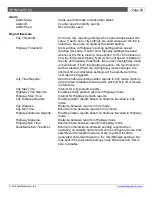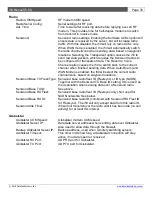
i50 Manual (5.51)
Page 19
© 2018 Datalink Systems, Inc.
www.datalinksystemsinc.com
6.0 Operation
6.1 LEDs
The i50’s LEDs will turn on briefly when power is first applied, and then start flashing. See section 4.4
for details on what the flashes mean. If no LED activity is seen, check that power is being applied to
the correct pins, and that voltage and polarity are correct.
6.2 Power Modes
The i50 has three power modes: asleep (sleep mode), awake, and periodic wakeup.
During sleep mode, the i50 turns off its GPS receiver, internal modems and COM ports, and the
microprocessor enters a low power mode. The VOUT power source is also turned off to shut down
any externally connected devices. This allows the i50 to remain connected to a vehicle power supply
over an extended period without draining the battery. While asleep, the i50 continues to monitor its
digital input pins and records any changes in its data buffer for later transmission. Note: there is no
way to contact the i50 remotely while it is asleep, as all modems are powered down.
In awake mode the i50 turns on its internal devices, activates VOUT, and begins normal operation.
Periodic wakeup mode occurs when the unit wakes briefly to send its position then goes back to
sleep. All internal devices are turned on, but the VOUT power source is not activated in this mode.
6.2.1 Power Up
Upon power up, the microprocessor determines its power mode using these parameters:
1) If an input alarm is active (see section 15.4), select awake mode.
2) I
f the “Sleep Timeout” setting is set to zero, select awake mode.
3)
If any input is configured as “Priority” and is active, select awake mode.
4)
If the “Wake on motion” bit is set and motion is detected, select awake mode.
5) If the
“Sleep Pin” digital input is inactive, select awake mode.
6)
If the “Wake at boot” bit is set, select periodic wakeup mode. The i50 will wake up, attempt to
send its position, then enter sleep mode.
7) Otherwise enter sleep mode immediately. Note: a power up report will be buffered and sent at
a later time.
6.2.2 Entering Sleep Mode
During awake mode, the microprocessor uses these parameters to determine when to sleep:
1) If an input alarm is active, stay awake.
2)
If the “Sleep Timeout” setting is set to zero, stay awake.
3)
If any input is configured as “Priority” and is active, stay awake.
4) If the
“Wake on motion” bit is set and motion is detected, stay awake.
5) If the
“Sleep Pin” digital input is active, start a timer. If the timer reaches the “Sleep Timeout”
period, enter sleep mode.
6) Otherwise reset the timer and stay awake.


